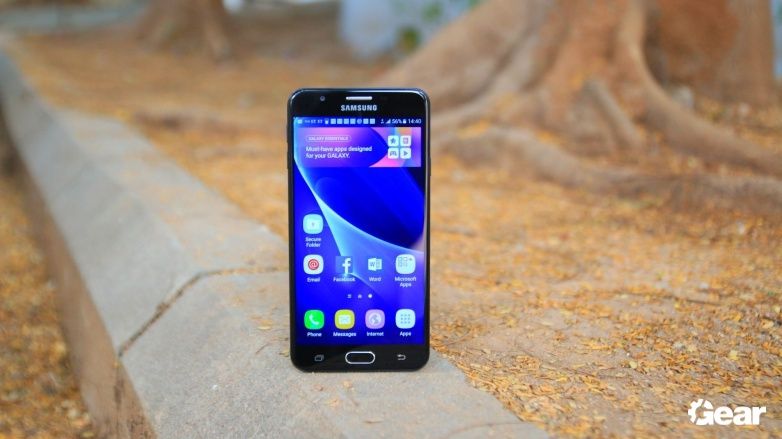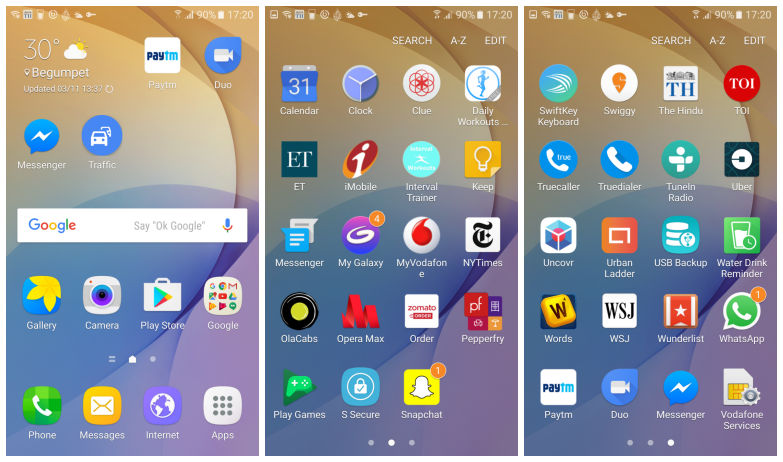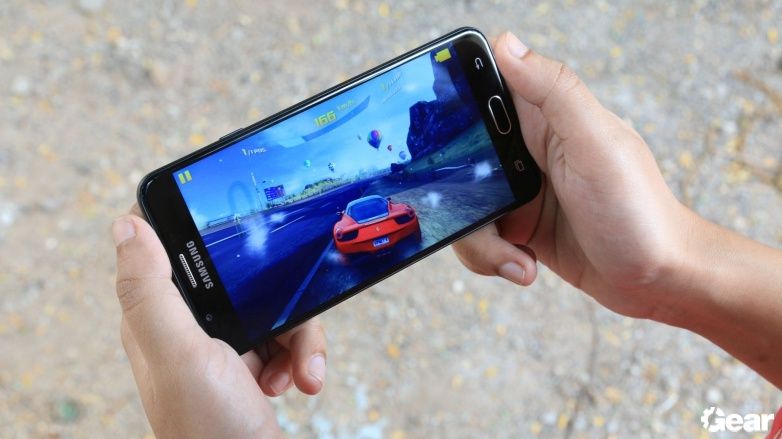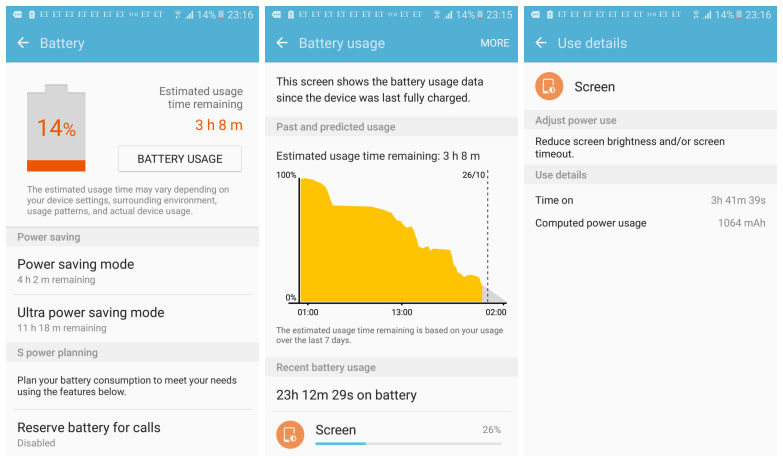
Samsung released the Galaxy On Nxt while it was still reeling from the after-effects of the Note 7 debacle. As we all know too well, the Note 7 fiasco was a huge disaster that cost the company heavily not only in terms of finances, but also its reputation. But despite these setbacks, the South Korean company continued to march forward, launching one smartphone after the next.
Within a short period of time, another important piece of news regarding the company broke out. Samsung had managed to occupy the number one spot as the highest-selling smartphone manufacturer in the world as per data obtained in Q3 2016. Surprisingly, even the colossal losses borne by the company couldn’t mar the overall profits it had made this quarter. In fact, quite on the contrary, the company reported a one percent increase in sales during the same period this year. A plausible reason for this could be the staggering number of smartphones that the company has been churning out. Fun fact: this year alone, Samsung has released close to 30 smartphones.
All these facts are vital as they help form an important narrative in Samsung’s growth story. In its quest for reaching the top, Samsung has been aggressive in its approach, launching one smartphone after the next in quick succession. However, in doing so, Samsung has largely neglected any kind of innovation or advancements in technology on their smartphones. My colleague, Rahul Srinivas, also pointed out in an earlier article as to how Samsung has been basically rehashing the same, older phones with minor changes as new ones.
And this brings us back to the On Nxt. Samsung’s newest device comes with exactly the same specifications as the J7 Prime, except for the storage capacity. The On Nxt offers 32GB of internal storage, which is double of what you get on the J7 Prime. Specs apart, another important difference is that the On Nxt is being sold ‘online-only’ whereas the J7 Prime can be picked up from an offline store. Both phones belong to the mid-range segment.
Also, ironically, the On Nxt has been classified as an addition to the On series. But, unlike the previous models of the On series which offer mediocre performance and cater to the entry-level segment, the On Nxt promises much more to the mid-range category.
How far Samsung’s strategy of rehashing phones with the same hardware and minor differences will work for the company is something that only time can tell. But, is this rehashed J7 Prime worth your money? We try to find out.
A Break From The Monotonous Design

At first glance, I was greatly impressed by the design changes that Samsung had made on the On Nxt compared to the previous phones in the On series. The device comes in an all-metal body with a 2.5D curved glass display that adds a premium vibe to it. While you can still sense Samsung’s typical design framework being used on it, the On Nxt does away with many of the inconsistencies that had plagued Samsung’s previous devices, notably the On series. (In my previous reviews of the On5 Pro and On7 Pro, I elaborately pointed out what I thought was off on the phones’ designs. In short, they were mediocre, boring and downright unimpressive). So, this change feels like a long time coming.
The capacitive keys lie below the display and have Samsung’s same old tried-and-tested layout: tactile home button flanked on either sides by the recents key and the back key. Above the display are the front camera, earpiece, proximity sensor and an LED notification light. The SIM card slot and the microSD card slot sit flush with the left edge and are so inconspicuously integrated into the design, that you are likely to not notice them from a distance.
But, all of this attention to detail is lost when it comes to the power button and the volume keys. These are made of plastic and have an inconvenient amount of travel on them. As a result, these feel very tacky and take away from an otherwise elegant design.
The fingerprint sensor is built into the home key at the bottom. The speaker is now placed at the right edge, which in my opinion, is a better design judgement. If you recall, both the On5 Pro and the On7 Pro had the speaker placed on the rear panel which caused the audio to sound muffled and faint.
While the phone impresses with its design, here’s a fair warning: it suffers noticeable dents even on minor accidental bumps. My review unit bore a couple of them in just a week’s usage. The display is protected by Corning’s Gorilla Glass. Otherwise, the phone is light and one-handed use is also pretty convenient.
The Phone Misses Out On OLED Display

A good display on a smartphone can ascertain the fact that half the battle’s won for the device. Well, almost at least. Now, when the device in question is a Galaxy smartphone, it’s easy to expect that Samsung – the world leader in displays with its AMOLED screens – will offer one on it, especially since we’re talking about the mid-range segment, right?
But unfortunately, it doesn’t. The On Nxt comes with a 5.5-inch LCD touchscreen that has a resolution of 1920x1080p (Full-HD), which translates to a rich pixel density of approximately 401 PPI. Before you get disappointed by of the lack of an AMOLED screen, I must tell you that the LCD panel on the On Nxt is actually quite good. In comparison to other LCD screens, its colour reproduction is quite good. Viewing angles are good too, with minimal colour shift noticeable at acute angles. While still not a match to the AMOLED displays out there, the LCD panel on the On Nxt does better than those on similarly priced smartphones such as the Asus Zenfone 3.
The brightness on the display is another great feature of this phone. You can comfortably use the phone even in bright sunlight, albeit with a little help from the outdoor mode, which allows you to increase the brightness easily from the notification panel. Be warned though: the On Nxt lacks an ambient light sensor, which we tend to take for granted these days. The lack of an ambient light sensor means that the phone will not be able to automatically adjust the screen’s brightness based on surrounding light.
The Phone Packs Competitive Hardware
Samsung packs competitive hardware on the On Nxt. It comes with an octa-core Exynos 7870 chipset, which comprises of 1.6GHz Cortex-A53 processor cores. The Exynos 7870 chipset was announced by the company this year and has already been used on the J7 Prime. For graphics, the On Nxt uses the latest Mali-T830MP2 GPU. The device comes with 3GB of RAM, which is practically a norm for mid-range Android phones these days.
The phone comes with 32GB of internal storage and also offers a microSD card slot that allows you to increase the storage capacity by up to 256GB, which is great. But more importantly, the phone offers a dedicated microSD card slot, which means that you don’t have to choose between a second SIM and additional storage.
There is a 13-megapixel rear camera with an F1.9 aperture. At the front is an 8-megapixel camera, also with an F1.9 aperture. For connectivity, the device offers you the usual Wi-Fi 802.11 b/g/n, Bluetooth 4.1, GPS with A-GPS, and a microUSB port. The Dual SIM device uses two Nano SIMs. It is powered by a 3300mAh battery.
Those apart, the On Nxt comes with a fingerprint sensor, accelerometer, and a proximity sensor.
The UI Is Boring

The On Nxt runs Android 6.0.1 Marshmallow.
With its new design, I was hopeful that some improvement would also be made to the software. But that’s not to be. Samsung’s UI hasn’t improved even the slightest in terms of design. The app icons are still inconsistent in their shapes. Also, the panel for quick toggles is still crowded. The boring UI could have passed unnoticed had it been an entry-level device. However, because of the price point the phone falls in, it isn’t excusable. In this price range, phones such as the Xiaomi Mi 5 offer neater and more refined-looking UIs.
The phone only offers the usual lot of customisations that we’ve grown so used to seeing on Samsung phones. By default, there is just one theme available preinstalled, but you can choose from a wider variety from the Theme Store.
The On Nxt comes with Samsung’s exclusive features such as S Finder, S Biker mode, Notes, S Planner, S Health, and S Secure.
Good Camera Held Back By Noise

The On Nxt comes with a 13-megapixel rear camera with an aperture of F1.9 and 28mm lens with LED flash. At the front is an 8-megapixel camera with an F1.9 aperture. Tapping on the home button twice triggers the camera, which comes in handy for taking quick shots.
Images taken by the rear camera in daylight are sharp with colours close to reality. However, as you zoom in, some amount of noise starts to creep in. While this may not be visible on the smartphone, it becomes apparent when you view the images on the desktop. I’m guessing this is because of some aggressive post-processing algorithm that Samsung has employed. For a mid-range phone with no OIS (Optical Image Stabilisation), the On Nxt pulls off quite good performance in low-light. The front-facing snapper is also affected by this issue. However, if you use the beautify mode for your selfies, there’s not much to worry about.
The camera is quick to focus. In case it doesn’t, you can touch on the screen area to lock focus. Like most mid-range phones, the On Nxt cannot be used to focus on objects that are within 10cm from the lens.
Performance & Connectivity

In terms of performance, there were no issue with voice calls. On the Vodafone network, the signal reception was also pretty good, as I had absolutely no complaints. Other connectivity features such as Bluetooth and Wi-Fi also worked as expected.
The phone can play Full-HD videos without any issues. By default, the handset is capable of running popular formats such as MP4. However, if you do happen to come across an unsupported video format, you can always install VLC or MXPlayer for the same. The bundled earphones are disappointing. However, when paired with a good pair of aftermarket earphones, the On Nxt delivers good sound.
The onboard speaker is quite weak. So, I suggest that you get yourself the good pair of earphones ASAP. I played Asphalt:8 to stress test the phone and found that there was slight stutter and lag during the game. The game also took more time to load as compared to my OnePlus X that costs ₹15,000.
The fingerprint sensor is problematic. While this is a standard feature on most mid-range devices, it didn’t work as smoothly as I expected it to. There were numerous occasions when I couldn’t unlock the phone despite carefully placing my finger. In fact, at one time, I was locked out and had to wait until after the 30 seconds’ break. Exasperated, I would later simply fall back on the PIN password to unlock the device every time the fingerprint sensor didn’t seem to work on more than two attempts.
Long Battery Life

The battery stands out remarkably. It lasted almost a day and a half before I needed to charge it again. This brilliant performance could be due to the Exynos 7870 processor, which the company claims to reduce power consumption by 30 percent.
Moreover, for somebody like me who is perpetually struggling with low battery most of the time, the phone offers handy features like Power saving mode, Ultra Power saving mode, Reserve battery for calls, Extend battery time, Forward calls when no battery.
I also tried the ‘Extend battery time’ feature that significantly stretches out the battery life. I tried this out when my battery was at about six percent and the battery lasted me at least another hour and a half before I got home and could charge the device. A life saver!
The device takes about an hour and a half to charge fully from zero to 100 percent.

Conclusion
The On Nxt is priced at ₹18,490. For this price, Samsung offers outstanding battery life, good cameras and good performance. While I wished that Samsung had used an AMOLED display that the company is so popular for using on its phones, the company very tacitly offers an AMOLED display on the Galaxy On8, but in exchange for lower specs such as a 5-megapixel front camera and a slightly less powerful Exynos 7580 processor with Mali-T720MP2. It is also cheaper by ₹2,590. So, this is a call you need to take simply as a matter of your preferences. However, since the market is flooded with many a great smartphones, I suggest that you look for options that provide you a better balance of all of these features, without you having to necessarily compromise on any. In that case, do check out the Lenovo Zuk Z1 and the Lenovo Z2 Plus.























